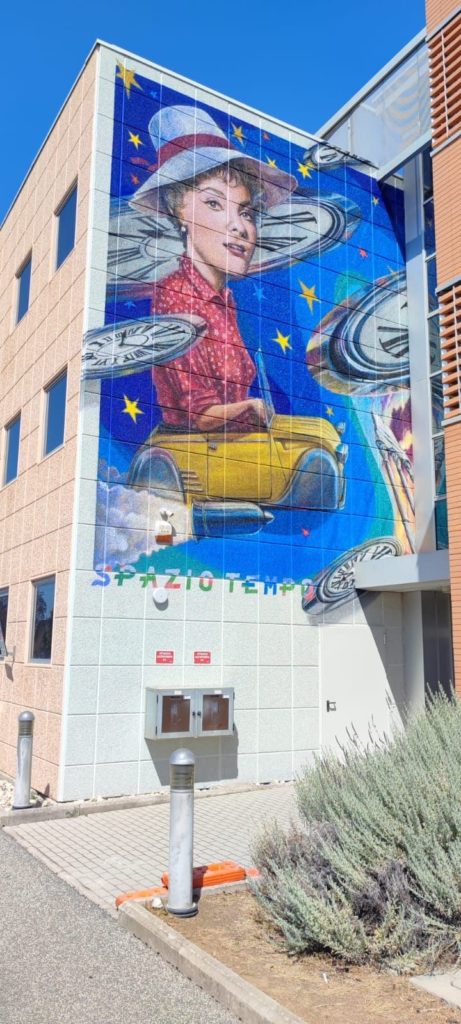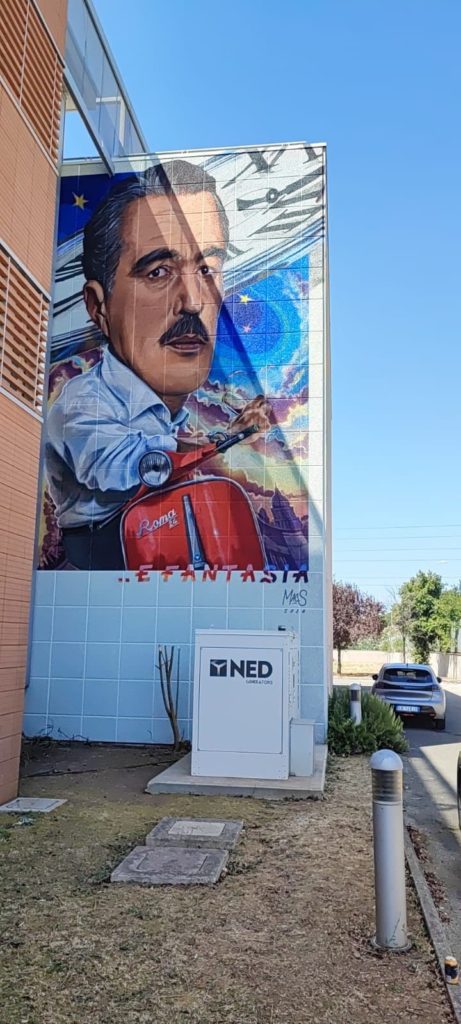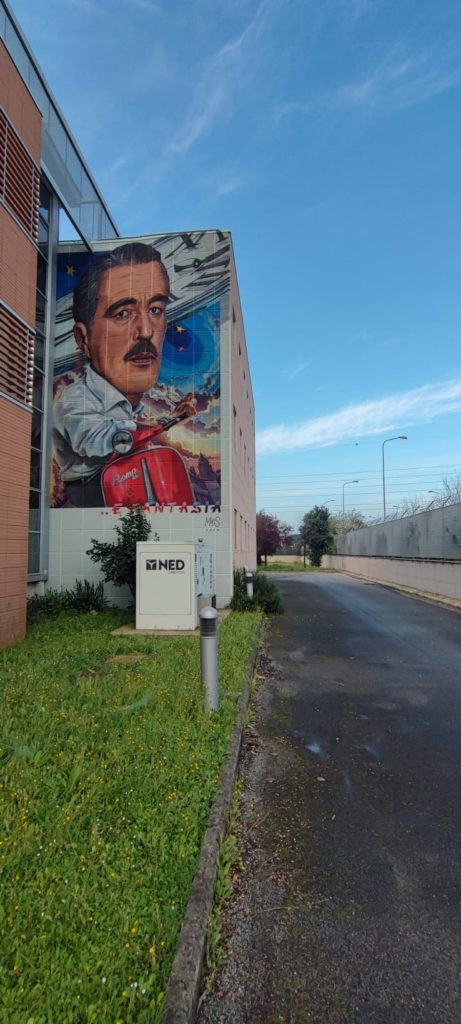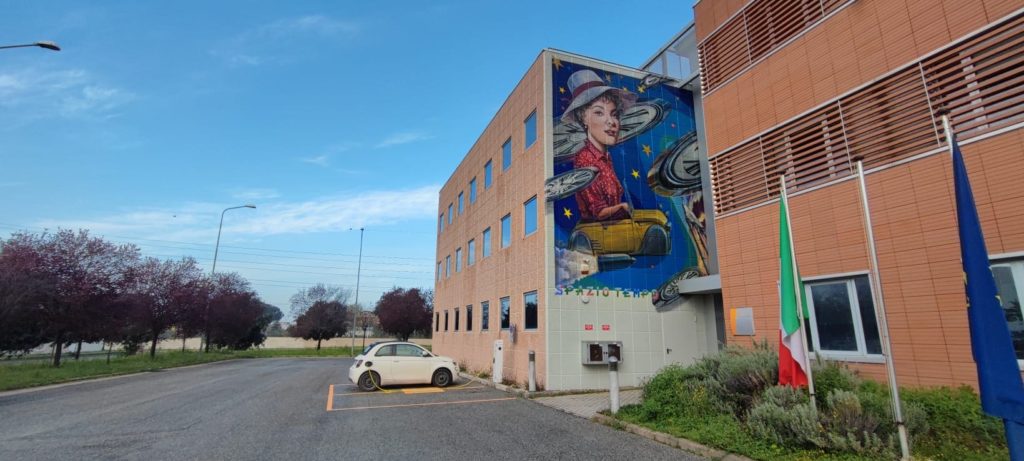



You are now standing before Space, Time and Imagination, a work by the Italian artist MACS—a visual and conceptual journey that weaves together culture, cinema, architecture, science… and imagination.
MACS is the artistic name of Antonello Piccinino, born in 1978 in Lanciano, a town in the Abruzzo region of Italy. From a very young age, he showed a deep passion for drawing, which led him in the early 1990s to express himself through the world of graffiti. That’s when he began signing his works with the name “MACS”—a signature that, over the years, has become a well-known mark in the world of urban art, both in Italy and internationally.
A self-taught and versatile artist, MACS works as a graphic designer, illustrator, and graffiti writer. His murals can be found in cities across the globe—from France to the United States, from Brazil to Singapore. He has collaborated with leading names in contemporary street art, bringing with him a unique style: a blend of realism, symbolism, and storytelling. His works don’t simply decorate urban space—they question it, transform it, and narrate it.
The piece you’re looking at, Space, Time and Imagination, may at first seem direct and immediate… but it unfolds across multiple layers of meaning.
The first is a clear homage to the city of Rome and its rich heritage. A city that holds centuries within itself, where history, art, cinema, archaeology, and modern life coexist. Rome is a place where time accumulates and space expands. And from this emerges the deeper concept of the artwork: space and time as inseparable dimensions.
MACS’ mural is divided into two walls.
On the left, an abstract, cosmic setting evokes the vastness of the universe, including elements such as the columns of the Imperial Forums. On the right, we see a recognizable Rome: the dome of St. Peter’s Basilica and the iconic Roman pines. These are two seemingly distant worlds—yet they are deeply connected, like two sides of the same reality. Just like space and time, which in the theory of relativity can only exist together.
At the center of the mural, we meet two legendary figures of Italian cinema: Gina Lollobrigida and Vittorio De Sica, stars of the 1953 film Bread, Love and Dreams, which inspired the title of this work. It’s a light-hearted film, yet filled with meaning. It tells the story of a police officer transferred from the hustle of the city to the slow pace of a small village in central Italy. A transition that becomes metaphor: from urban chaos to rural stillness, where time slows down, boredom turns to contemplation, and love is born.
This leads us to a deeper question posed by the artwork: